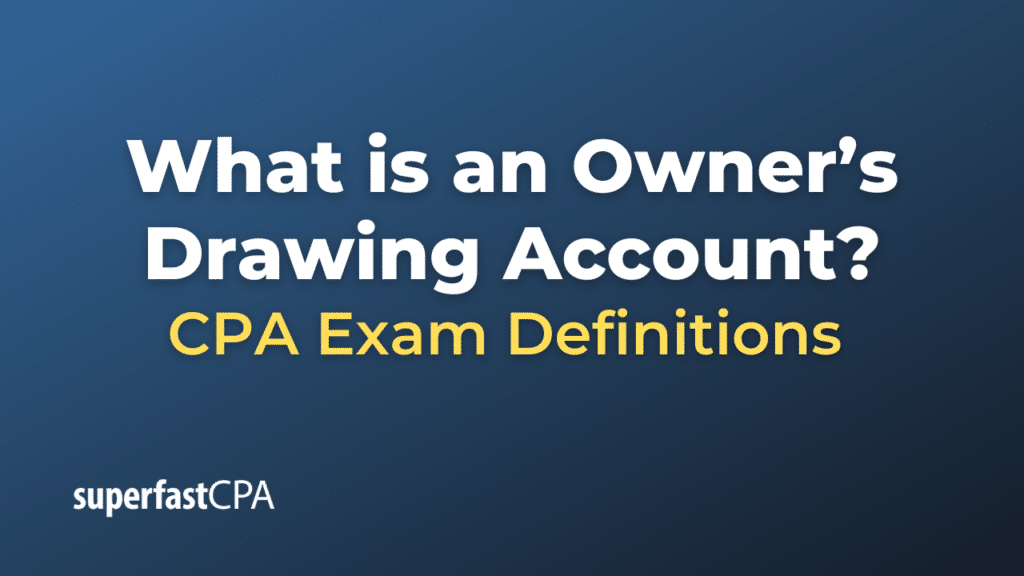Owner’s Drawing Account
An owner’s drawing account, often simply referred to as a “draw account,” is a separate account in the general ledger of a business that tracks the amount of money or other assets that the business owner has withdrawn for personal use. These withdrawals are often called “draws.”
The drawing account is a contra account to the owner’s capital account (or equity account) because it reduces the amount of owner’s equity in the business. At the end of the accounting period, the balance in the drawing account is subtracted from the owner’s capital account, lowering the owner’s equity in the business.
It’s important to note that these draws are not considered a business expense and do not appear on the income statement. Rather, they represent a reduction of the owner’s equity in the business.
After the end of the accounting period, the drawing account is typically closed out (i.e., its balance is brought to zero), and any balance in this account is subtracted from the owner’s capital account. The drawing account is then ready to track withdrawals in the next accounting period.
The use of a drawing account is common in sole proprietorships and partnerships, where the owners may take draws instead of a formal salary. In a corporation, owners/shareholders typically receive compensation in the form of dividends, not draws.
Example of an Owner’s Drawing Account
Imagine Sarah, who owns and operates a small boutique. At the beginning of the year, her Owner’s Capital account has a balance of $20,000. This represents her current equity in the business.
In March, Sarah decides to withdraw $2,000 for her personal use. This withdrawal would be recorded in her Owner’s Drawing account, bringing its balance to $2,000.
In July, Sarah again takes out $1,000. This additional withdrawal is added to the Drawing account, bringing the total for the year to $3,000 ($2,000 + $1,000).
At the end of the year, the balance in the Drawing account is deducted from the balance in the Owner’s Capital account to reflect Sarah’s equity in the business. So, if Sarah’s boutique made a net profit of $10,000 during the year, first this would be added to her Owner’s Capital account, raising it to $30,000 ($20,000 initial balance + $10,000 profit). Then the $3,000 from the Drawing account would be subtracted, reducing her capital account balance to $27,000 ($30,000 – $3,000).
Finally, the Drawing account is closed out (i.e., its balance is reset to zero) in preparation for the next accounting period.
This example illustrates how the Owner’s Drawing account is used to track personal withdrawals by the owner, and how these draws affect the owner’s equity in the business.














